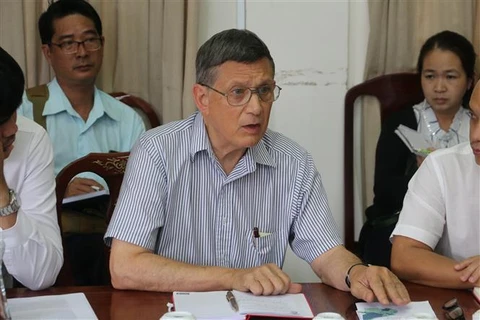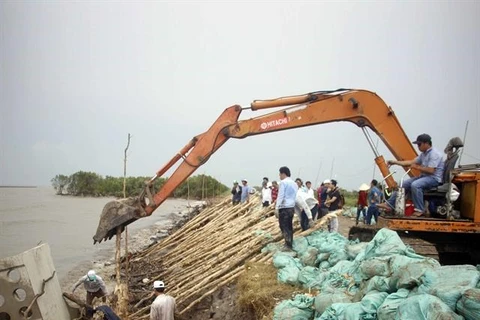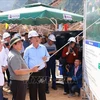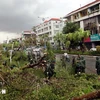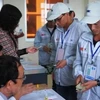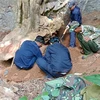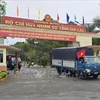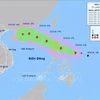Hanoi (VNS/VNA) - More than half of the Mekong Delta will disappear under sea level in the next two generations if no action is taken now, research has found.
The results of the five-year-long 'Rise and Fall' research project funded by the Netherlands government announced recently shed light on the linkages between land subsidence, groundwater extraction and saline intrusion in the Mekong Delta, locally known as the Cuu Long Delta, while giving out a red alert over the future of Vietnam’s largest rice production area.
The delta is home to more than 17 million people, most of whom are farmers who grow nearly 60 per cent of the country's rice and 40 percent of the country’s aquaculture products.
Rapid economic development in the region since the 1990s led to a drastic increase of groundwater extraction for agriculture, aquaculture and living activities, researchers from Utrecht University and Deltares Institute found.
The over-extraction of groundwater reserves, estimated at about 2.5 million cubic metres a day in 2015, triggered and accelerated mass land subsidence in the delta with some areas sinking at rate up to 6 cm a year.
It ultimately left the Mekong Delta, which saw almost no subsidence in the 1990s, merely 80 cm above the current sea level.
“I come from the Netherlands which is a flat land but I have seen some parts in the Mekong Delta even flatter than the Netherlands during my field trips to the region,” said Dr Philip Minderhoud, leader of the research group.
“Groundwater extraction is not free. We pay for it by elevation and once below sea level the costs of protecting the land rapidly increase.”
The researchers also made projections of the sinking rate of the delta taking into account subsidence induced by groundwater extraction and rising sea levels due to climate change.
If groundwater usage keeps growing at 2 percent per year, the outlook will be at the bleakest as a number of areas will stay under sea level by less than 10 years from now while the southern half and beyond will be engulfed by seawater by 2080.
In other scenarios which see no increase in the groundwater extraction, the percentage of land falling under sea level will subsequently decrease. Nearly 50 percent of the delta will sink below sea level in case of stable extraction and only a third if the water use was reduced by 75 percent.
While the irreversible sinking already set in motion and accelerated quickly, river sediment which was supposed to compensate land subsidence became insufficient. It was either blocked upstream due to a series of dam construction on the Mekong River or destroyed by sand miners, according to the research findings.
The sand starvation made the tide intrude deeper with greater volume, resulting in exacerbating salinisation that would seriously damage the region’s crops and aquaculture industry.
“It is recommended that the Government of Vietnam tackles the root causes related to the mining of groundwater and sand,” Dr Minderhoud said.
“The research is not to scare people but to prepare them. Vietnam has to take action now. That’s the crucial part.”/.
VNA

